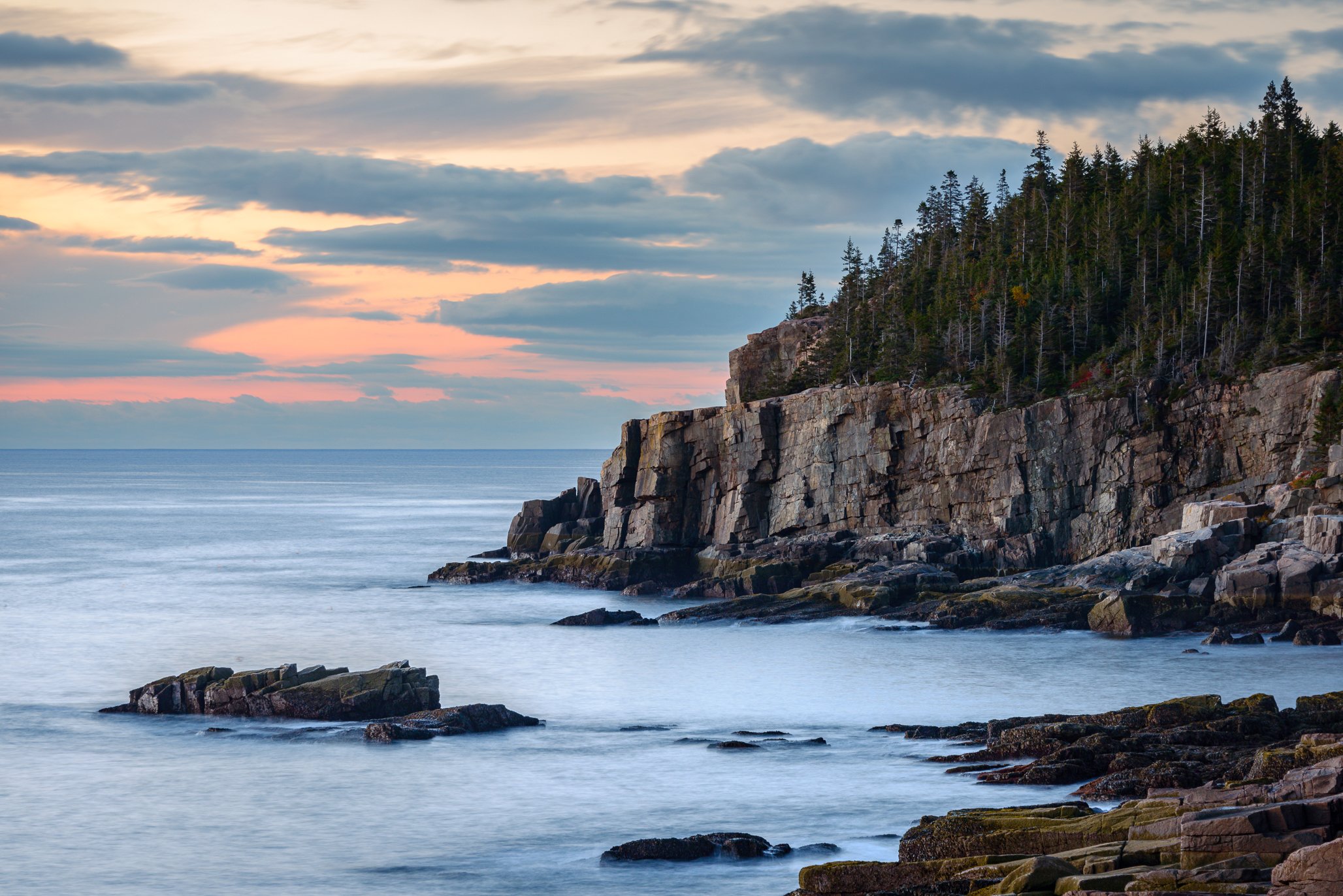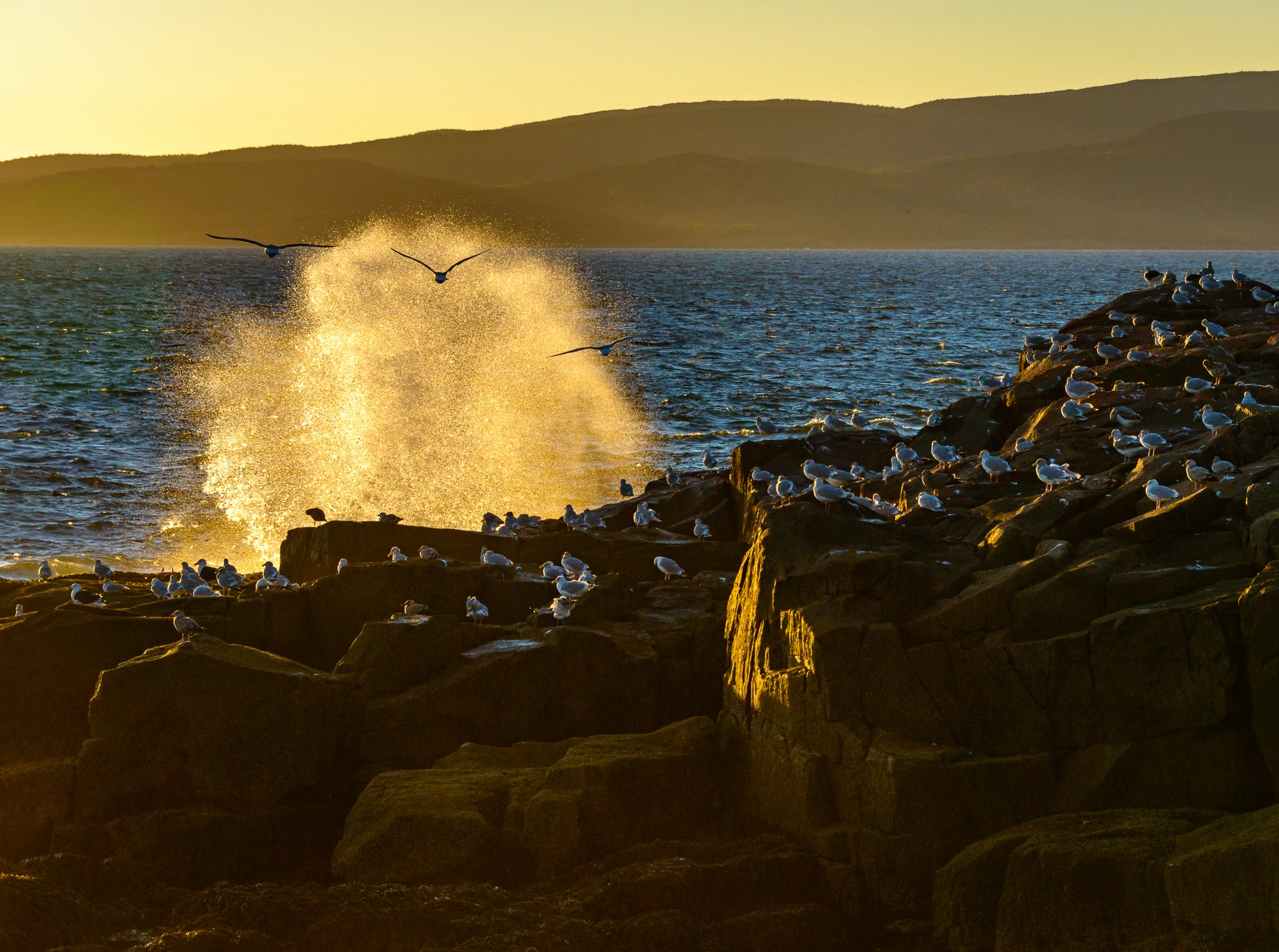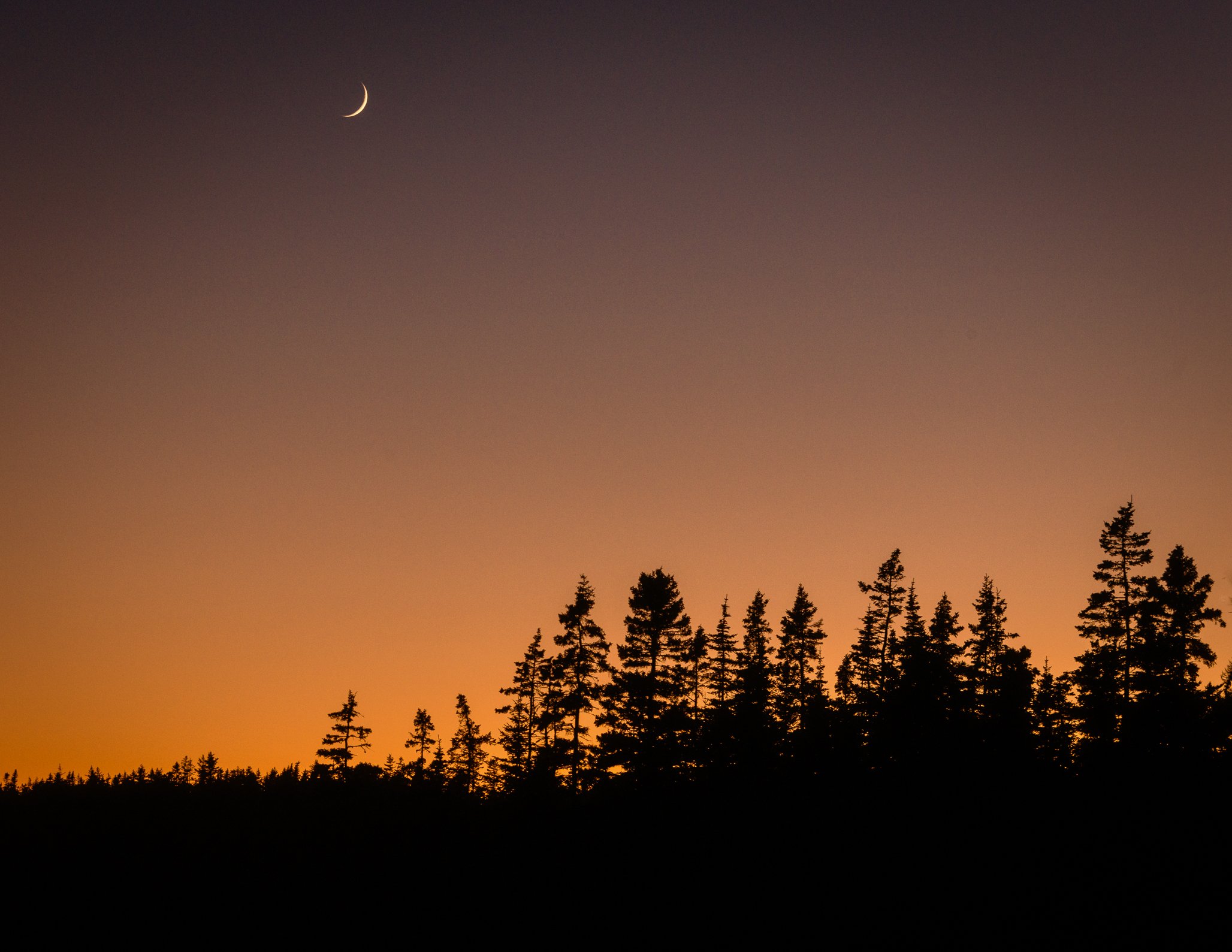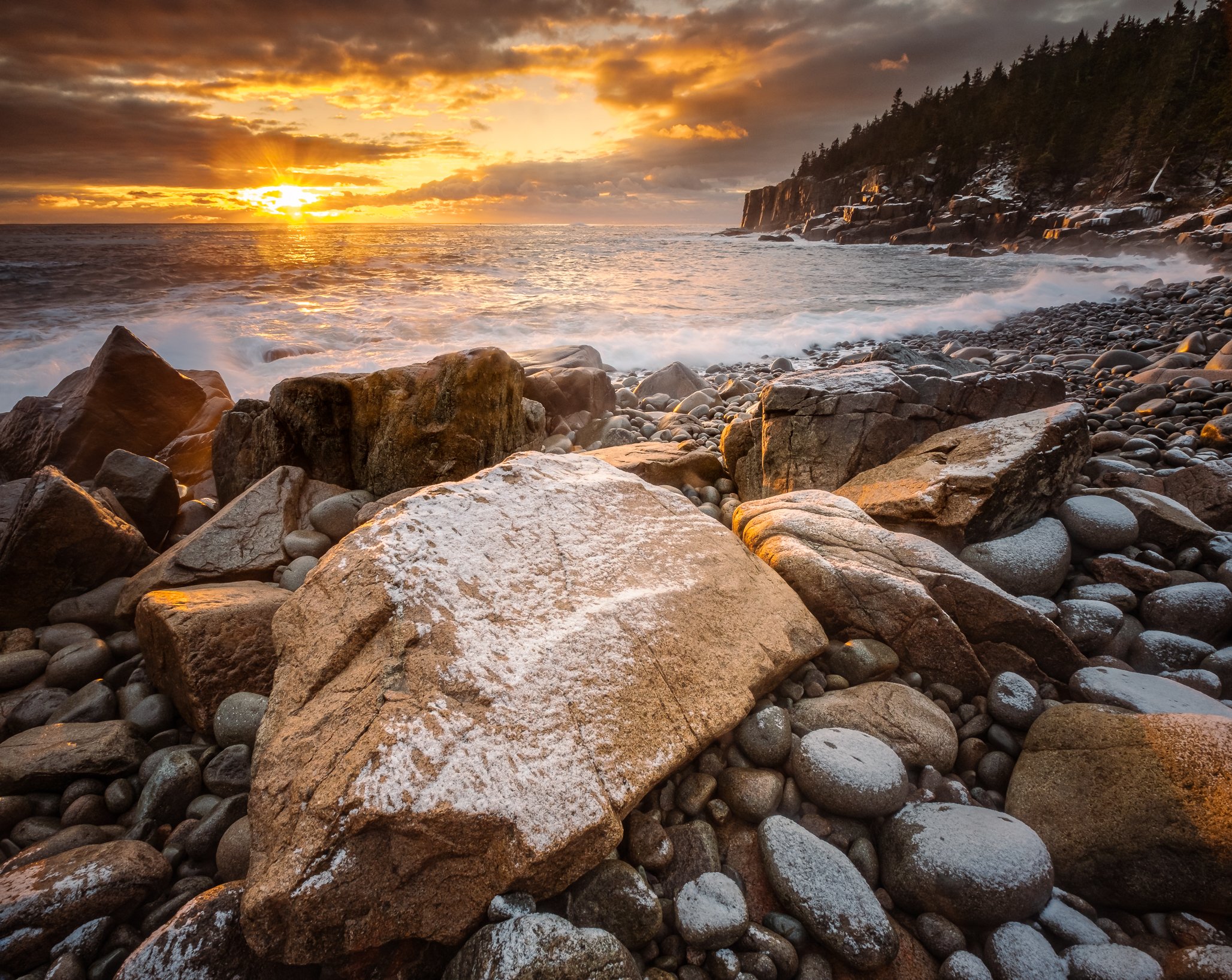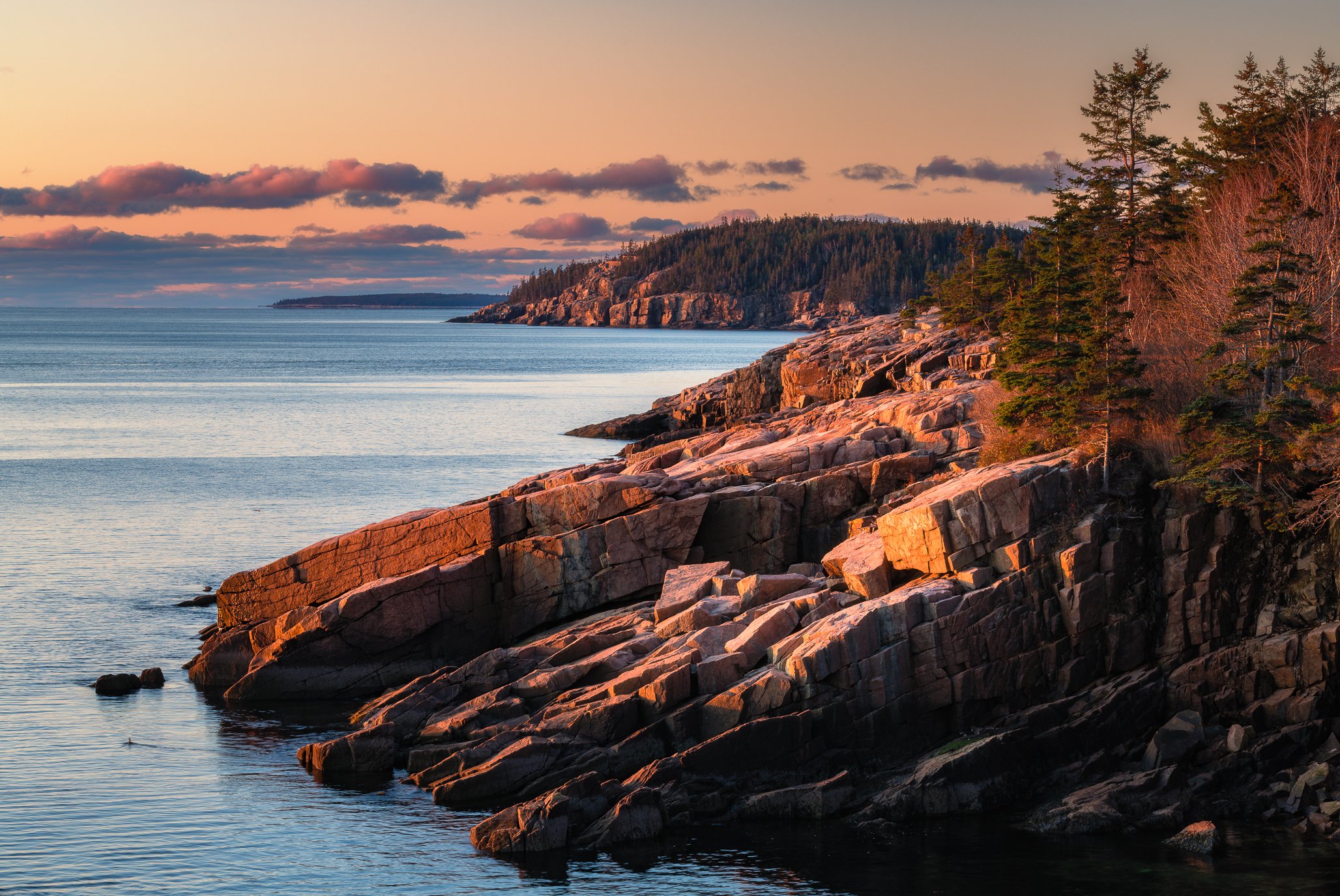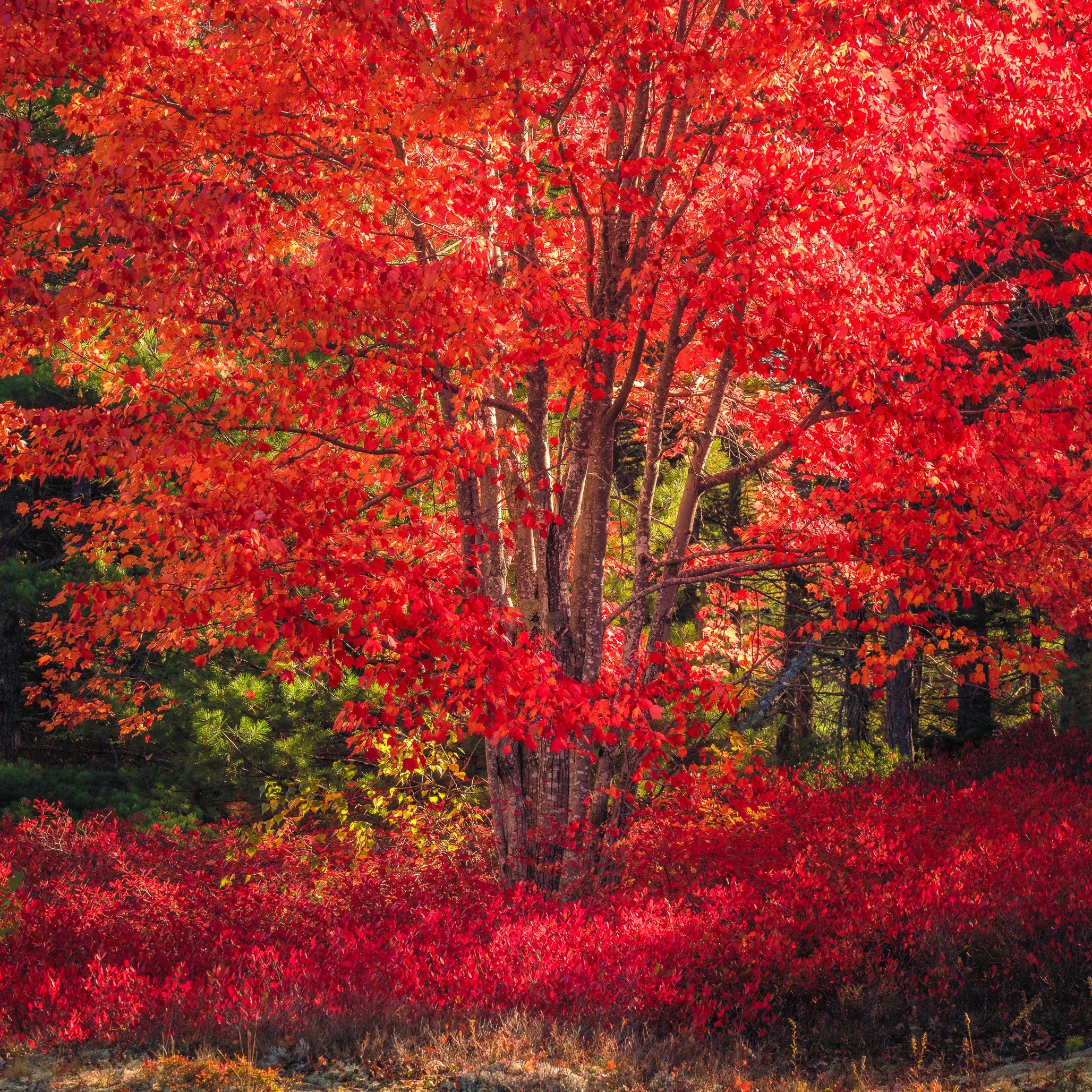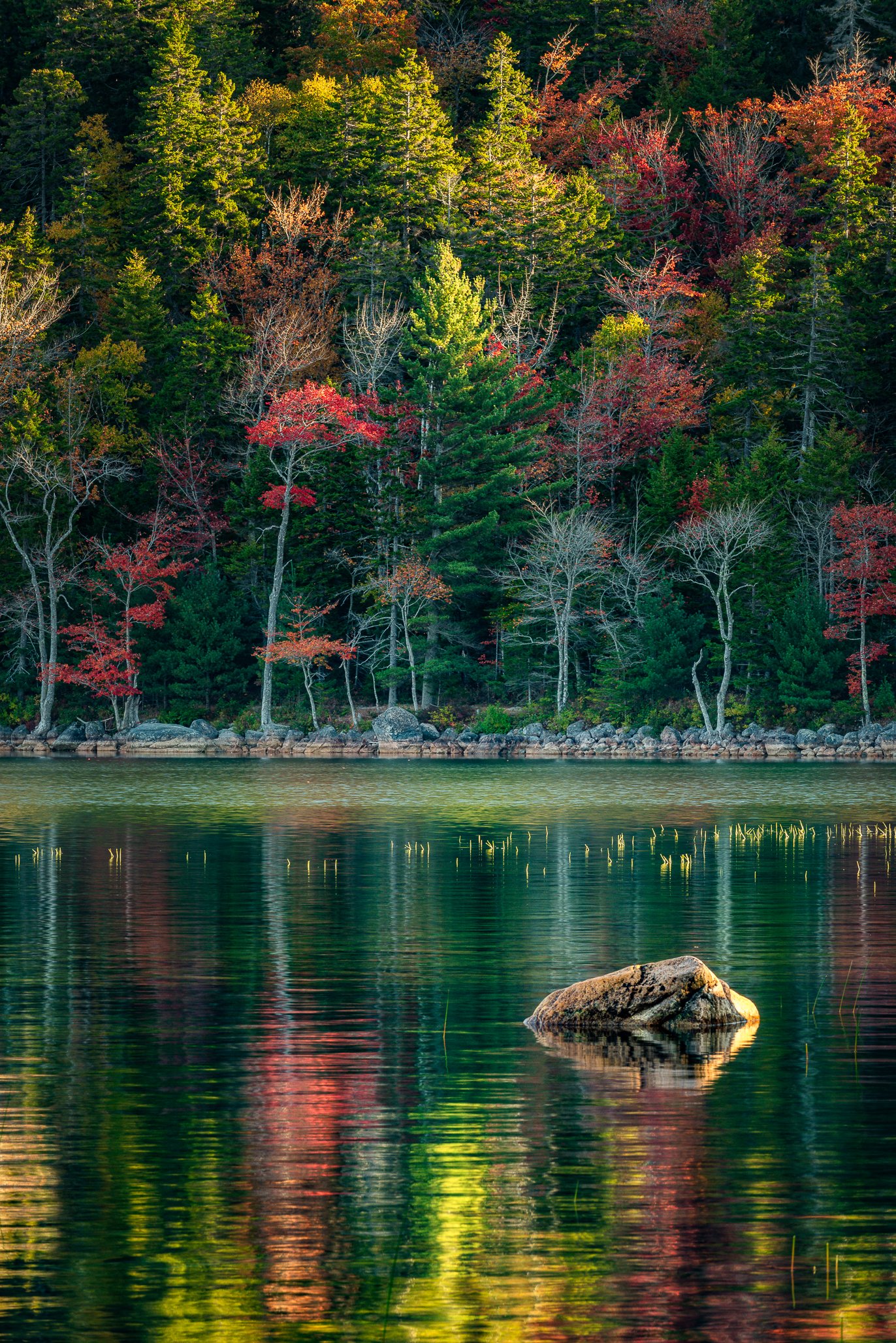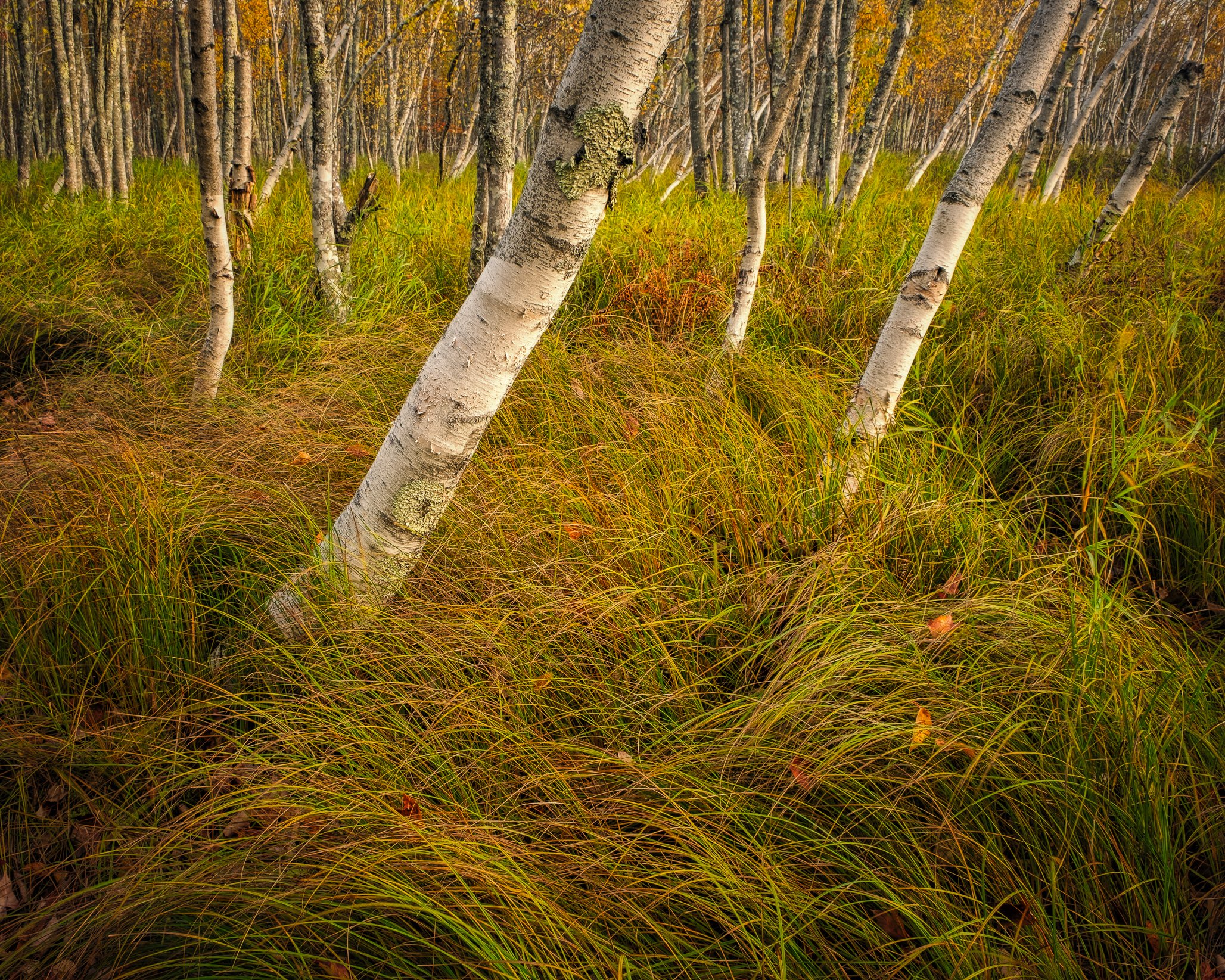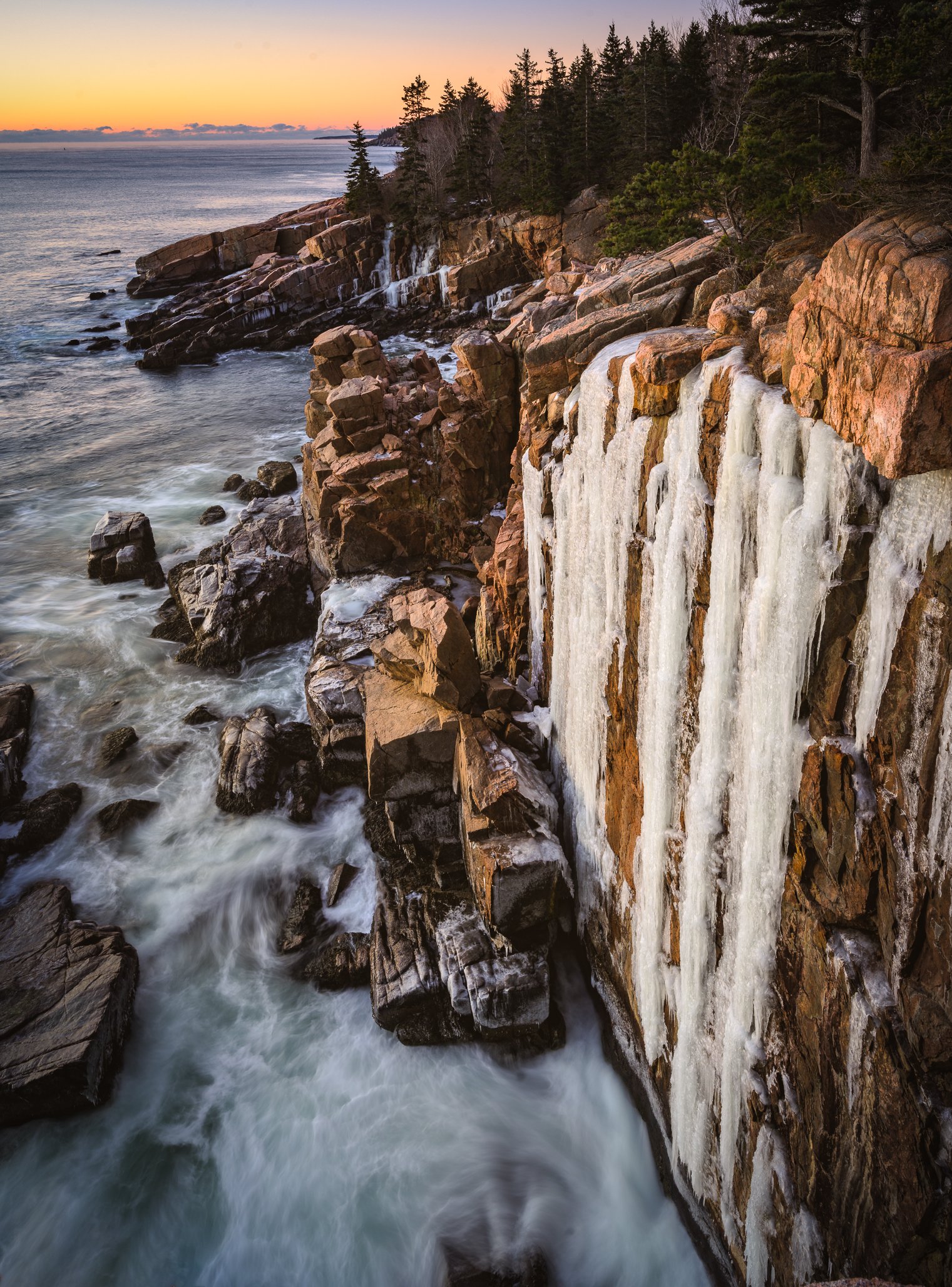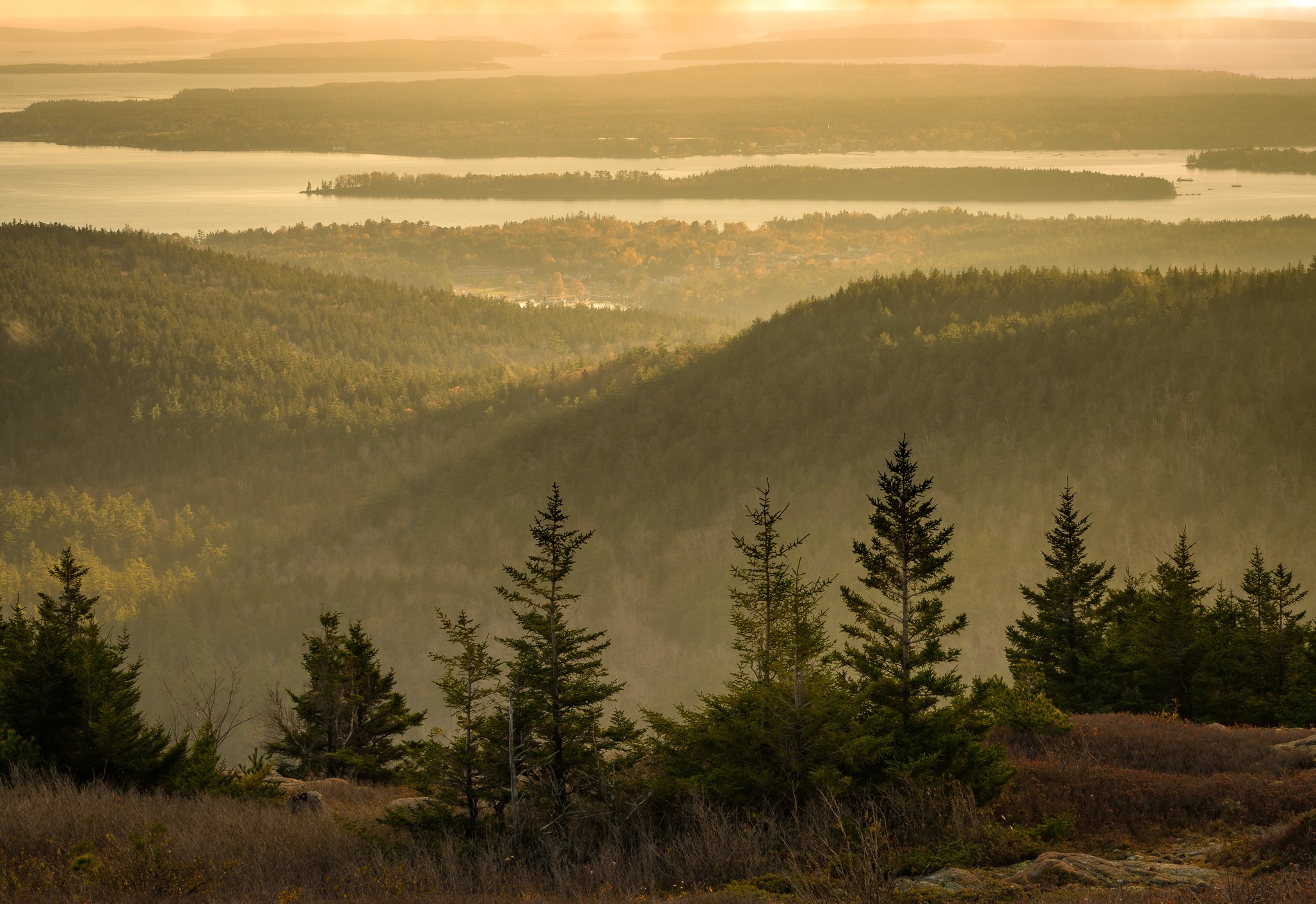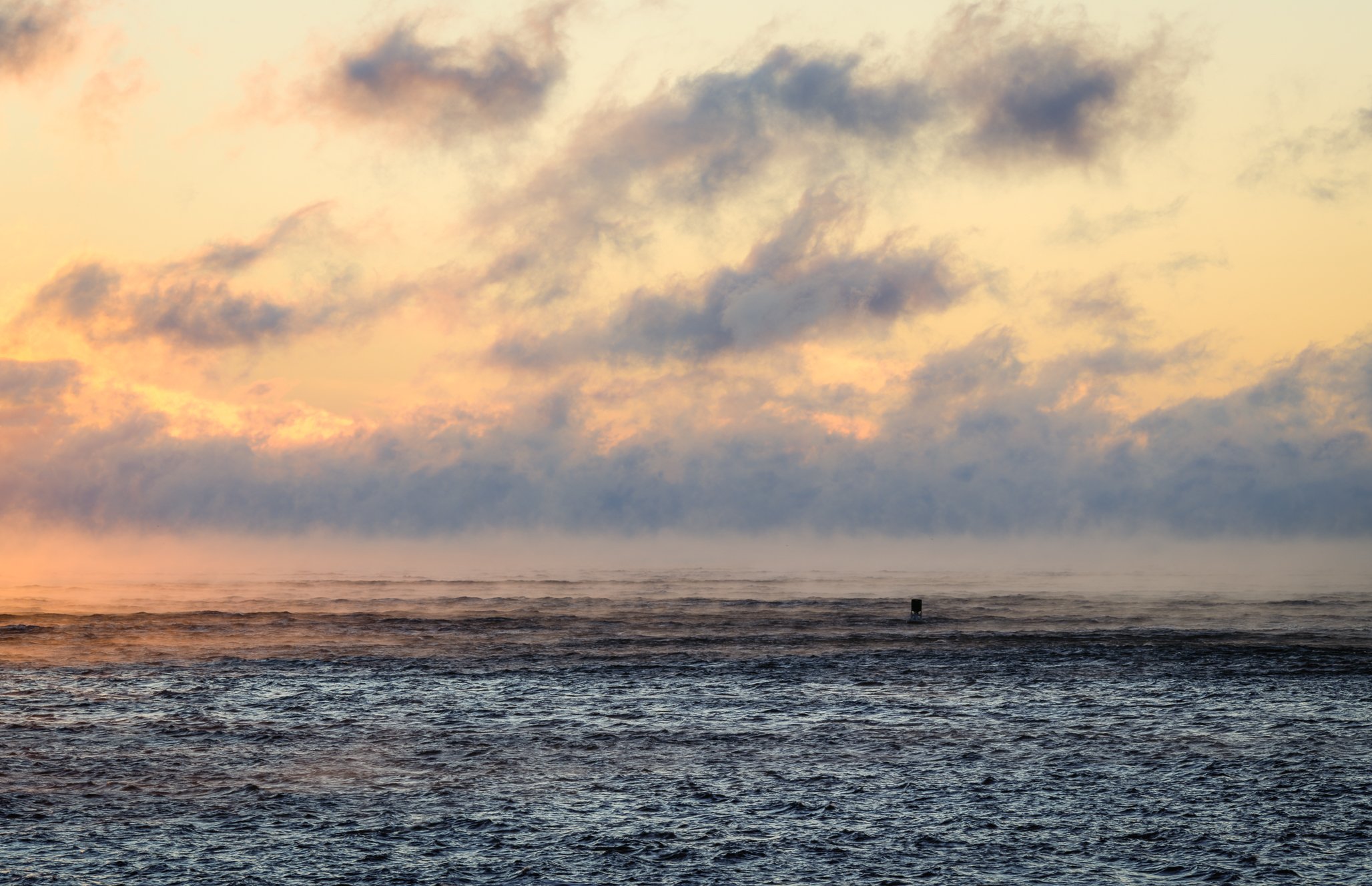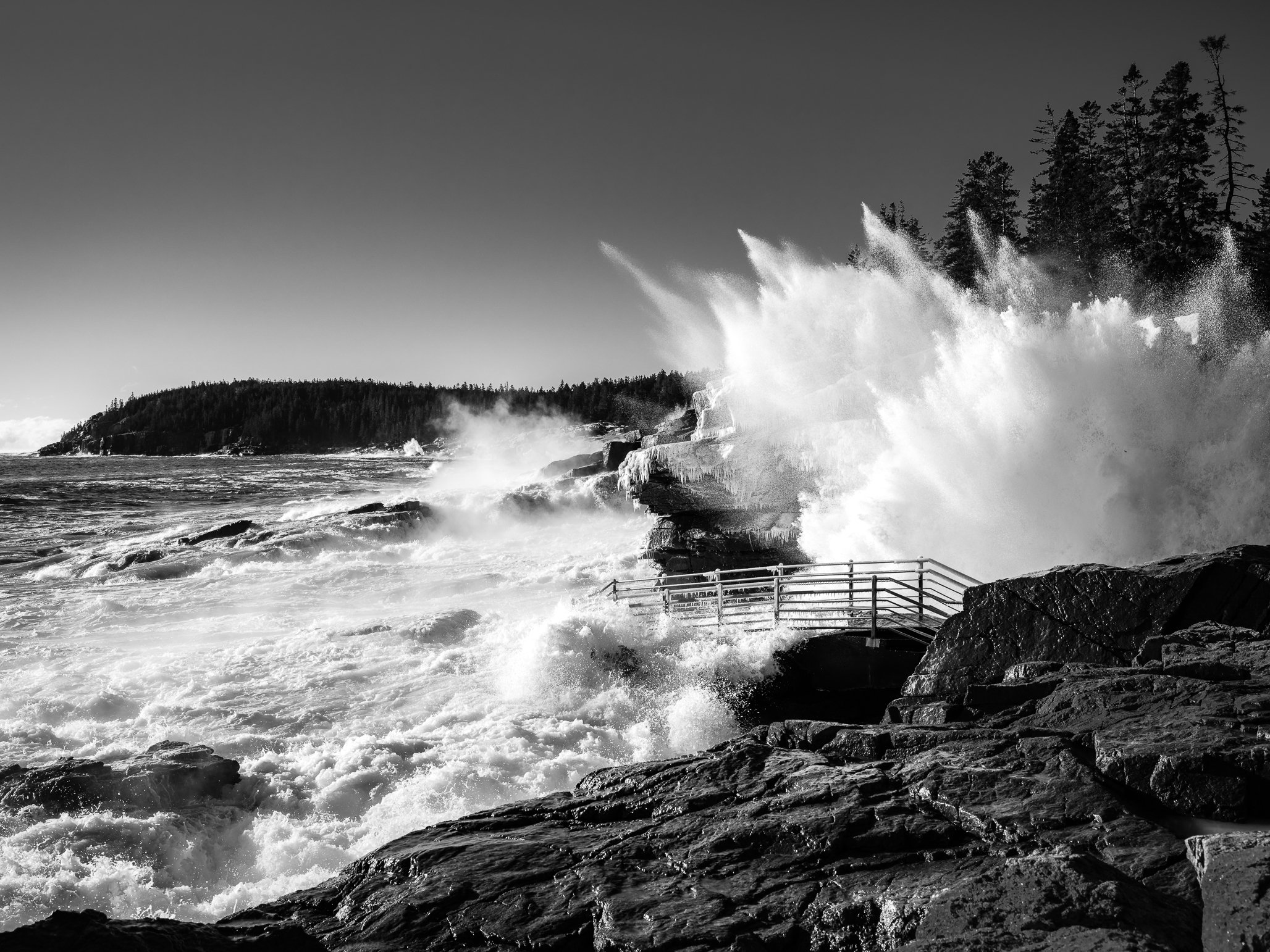Acadia National Park
When someone mentions National Parks, it conjures images of wide-stretching western vistas complete with massive, jagged mountain peaks touching an ever expanded cobalt blue sky. America's National Parks are all those things and more. The American West gave rise to the idea of National Parks with the signing of the Yellowstone National Park Act in 1872. This act established the first American (and the world's) national park. The park system expanded as the Antiquities Act was signed in 1906. In 1916 President Woodrow Wilson created the National Park Service. Today the service oversees 63 parks and 423 national park sites encompassing over 84 million acres. Interest in the parks has never been greater as Americans, and international visitors continue to visit in record numbers.
In 1919 the first national park east of the Mississippi River was established. Three years earlier, President Woodrow Wilson established the Sieur de Monts National Monument but was changed to Lafayette National Park in February 1919. Not until January 1929 was the park officially changed to Acadia National Park. The park encompasses over 49,000 acres in three prominent locations, with the largest being Mount Desert Island. The word Acadia is likely devised from an area in Greece known as "Arcadia" to the 16th-century explorer Giovanni Verrazzano. Most of the land in the modern-day park is donated land. Private citizens like George B. Door and Charles W. Eliot were keenly aware of the dangers of the overdevelopment of beautiful coastal areas. John D. Rockefeller donated 11,000 acres of land, the majority of which he had spent almost twenty years building the now-famous carriage roads. Over the last hundred years, there have been many others who have donated their time and other resources to help maintain the natural beauty that is Acadia.
Photographers were the first to notice all of Acadia's natural beauty. Elements such as a rigid rocky coastline surrounded by majestic cliffs and thick woodlands dotted with lakes and streams will get landscape photographers' creative energy flowing. Photographers are attracted to the diversity of subjects in relative proximity to each other—Mount Desert Island hosts a majority of Acadia's real estate easily navigated by automobile. The island's east end is home to the park's 27-mile loop access road providing easy access to Acadia Lakes, Mountains, and ocean shoreline. You can access the park's most popular locations like Jordan Pond, Sieur De Monts, Sand Beach, Otter Point, and Cadillac Mountain via the loop road. Each site has dedicated parking, filling quickly in the busy summer season. Cadillac Mountain and Sand Beach have recently installed a reservation system for automobiles during the summer season. You never need a reservation to hike to these locations. Only the Ocean drive section of the loop road is open to vehicles during the winter season. The island's west side is home to the popular Bass headlight and the Seawall campground. It has other less-visited locations like the Cranberry Islands and the Schoodic Peninsula located across Frenchmans Bay. The peninsula has its loop road.
Acadia's true gift to photographers is its diversity. Most national parks are about one dominant feature, such as a mountain range or rock formations. Acadia offers something for everyone in one easy-to-navigate package. There are 26 mountains ( seven with at least 1,000 ft elevation), over 40 miles of ocean shoreline, miles of forested and rocky landscape hiking trails and carriage roads, and sandy beaches. There are 24 lakes/ponds, big and small, and several streams with waterfalls. The landscape is diverse and compact. A visitor here photographing can quickly fill their memory card with dramatic oceanscapes, quiet woodland landscapes, and mountain top vistas in just a few days.
While summer is Acadia's busiest season, the park is photogenic in all four seasons. Acadia is the eighth most visited national park, and most of the nearly three million annual visitors show up for summer. Getting around is difficult; hiking trails can be shoulder to shoulder, and parking lots can be filled by 8 AM. Autumn in Acadia offers the best photo opportunities. The woodland colors are beautiful, the harbors busy with activity, and the hiking trails are less crowded. A special note for photographers, while fewer people are visiting in autumn, there are more photographers in autumn. So expect more people in the famous photo spots. Spring brings a rebirth of life in the woods, running water in the streams, and a new photography season. Late spring starts to get busy, and tourist-free photos become more complex. Winter is the most intriguing season to photograph Acadia. The conditions offer lots of unique opportunities. The park looks much different in winter. Cliffs covered in ice are beautiful, ocean spray frozen to everything is everywhere, and you get "sea smoke." If you are willing to brave the extreme elements, winter will bring the best photographic rewards, plus you will have most of the park entirely to yourself. In 2022, you will have to pay the park entrance fee in winter, and NPS will check autos for park passes. Successful winter photography does require advanced planning and proper protection from the elements, which are often brutal.
If you are visiting Acadia for the first time and want to maximize your photography efforts, hiring a professional to guide you is a good idea. A hired guide will know the best locations for the current weather conditions, which significantly increases your chances of winning shots. I have been visiting Acadia for over 30 years and still hired a professional. I find it a wise investment. The professional photography guide I use is JK Putnam. John is a professional photographer and gallery owner on Mount Desert Island. You can reach John at www.jkputnam.com
Some of my favorite places (and many others)to photograph is
Jordan Pond (and Jordan Stream)
Jessups Path
The Tarn
Boulder Beach
Sand Beach
The Schoodic Peninsula
Hunters Beach
Some more interesting facts about Acadia National Park
Average winter temp. - 27 degrees
Average Summer temp. - 67 degrees
Average annual precipitation - 47 inches
Altitude - 0 (sea level) - 1,530 feet (26 mountains)
Ocean Shoreline - 40 miles
